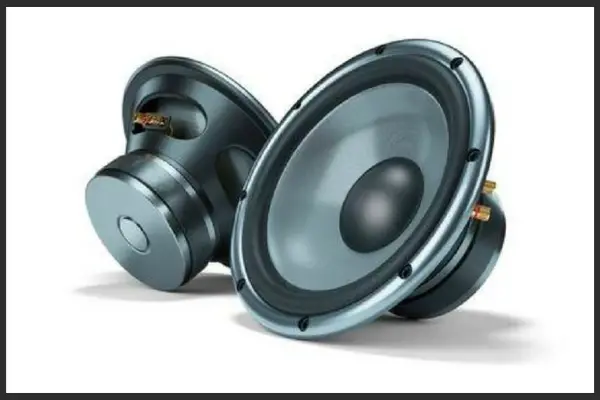2 Ohm vs 4 Ohm – Which Is Better For A Subwoofer?
The age old debate of 2 ohm vs 4 ohm and which is better for your subwoofer is ongoing. Which hits harder? Which produces cleaner bass? And which is best for your car battery and amplifier?
As with everything in car audio industry, there are pros and cons to both and it’s pretty much down to personal choice. Most people can’t tell how impedance (resistance) plays its part in defining a subwoofer’s performance, but knowing this is critical in the 2 ohm vs 4 ohm debate.
All subwoofers add something other woofers can’t, and whichever subwoofer you get you’ll be looking for either punchy and clean bass or earth-shattering bass that isn’t as clear.
This is because subs are built only to reproduce the low frequencies, leaving the mids and highs to the woofers and tweeters, and the resistance they produce will have an effect on the bass reproduction.
So, when you’re shopping for a subwoofer, whether it’s a 2ohm vs 4ohm impedance, it can be confusing which to get. After all, when it comes to loudspeakers and other car audio parts, apart from audiophiles, who really understands the importance of it all?
>>Subwoofer Wiring Diagrams for all set ups<<
What Does Ohm Mean?
Before we look at the difference of subwoofer impedance, it’s good to understand ohm meaning. People throw about the term, and many learn it in school and forget about it pretty soon after. But what does ohm mean?
Impedance, measured in ohms (Ω) is the amount of resistance the subwoofer offers against the flow of electric current through the subwoofer. This flow of electric current produces the sound, and the resistance the subwoofer offers against it determines the quality of the sound.
All subwoofers have a certain level of resistance to an audio signal, and most subs have an impedance level of 2 or 4 ohms, and many subs and amps are flexible and work with both levels.
So, whether you have one or the other, or a subwoofer that works well at both 2- and 4 ohms, it’s good to know which is better at producing bass quality.
2 Ohms vs 4 Ohms
So, now we know what Impedance actually is, let’s take a deeper dive into the 2 ohm vs 4 ohm debate…
2 Ohm Subwoofer
As you can imagine a 2-ohm subwoofer means it has an impedance of 2 ohms, which means it doesn’t have a lot of resistance in its circuit. Because of this, an amplifier will be able to feed more power without much resistance from the sub, which will also need less voltage for the amount of output from your amplifier.
For example, if you have a subwoofer rated at 300 watts, you should get more volume from the 2-ohm subwoofer than you can from a 4-ohm subwoofer and amplifier.
This generally results in louder bass reproduction, but the downside is that it will consume more power and produce a lesser quality bass.
4 Ohm Subwoofer
A 4 ohm subwoofer has an impedance of 4 ohms, which is obviously higher than the 2 ohm sub. The higher resistance in a 4 ohm subwoofer means the bass reproduction won’t be as loud vs a 2 ohm subwoofer made with similar specifications.
However, versus a 2-ohm sub, a 4-ohm subwoofer consumes less power from the amplifier, and the bass reproduction will be tighter and arguably a higher quality clean bass.
Ironically, even though it’s not as loud on paper, the sound reproduction of a 4 ohm sub can be heard from farther away. This is down to the tightness and accuracy of the bass that travels further before fading away.
If you want the best and cleanest bass, you should go for a 4 ohm subwoofer, although the main downsides is they’re generally more expensive, and they will need more power to achieve the same amount of sound output.

Which Is Better Then?
So now you know the key differences between them, which is better in the 2 ohm vs 4 ohm debate?
As you can probably work out, it’s down to personal preference. Do you like extremely loud and wide bass? Or do you prefer punchy and crisp bass that isn’t as car shaking?
Both impedance levels are great, and for most people they will be good enough, but if you prefer bass as loud as possible go for a 2 ohm, or even 1 ohm subwoofer.
If you prefer your bass to be tight but won’t deafen your neighbors, then a 4 ohm subwoofer will be your likely choice.
Is There A Difference In 2 Ohm vs 4 Ohm When Using Multiple Subwoofers?
What if you have multiple subwoofers – does this make a difference in the 2ohm vs 4ohm debate?
If you want to use more than 1 subwoofer in your car, you can choose to run them from a single amplifier or multiple amps. But if you run them from a single amp, the wiring circuit will determine their resistance.
You can wire subwoofers either in series or parallel circuits. Each has their benefits and each circuit either cuts in half or doubles the resistance of your subwoofers, so make sure your subwoofers are stable at the impedance your wiring circuit will produce.
Series wiring is the most common choice for wiring multiple subwoofers. This series, as you can see in the diagram, means the wires run around in a series. Therefore, the wire from one subwoofer negative terminal will be connected to the other sub’s positive terminal and vice versa.
With series wiring, it multiplies the resistance so you’ll end up getting higher impedance. For example, if you wire two subwoofers with an impedance of 2 ohms each, the total impedance will be 4 ohms.
In parallel wiring, you wire the terminals of one sub to the matching terminals of the other sub, so positive to positive and negative to negative.
As opposed to a series circuit, parallel wiring will cut your resistance in two, so if you have the same two subwoofers at 2 ohms each set up in a parallel circuit, the impedance level will be cut to 1 ohm.
2 Ohm vs 4 Ohm – It’s Up To You
Determining the best audio equipment is always a grey area, and with the 2 ohm vs 4 ohm debate there’s no resistance to the changing that. Bad pun intended.
It’s really down to personal choice. Most people opt for a 4 ohm subwoofer and amplifier set up, because the bass is tighter and cleaner, and the sound is better. For most people!
Some people prefer wider and more trembling bass and you get this with less resistance, so in that case a 2 ohm subwoofer and amplifier is better.
But it’s not just resistance that makes up a subwoofer and its ability to reproduce bass. If you want a better understanding of how all parts of a subwoofer work, check out this article.
Are you ready to buy a subwoofer, take a look at these reviews of the best subwoofers:
- The Best Subwoofers For A Car
- The Best 12 Inch Subwoofers
- The Best 10 Inch Subwoofers
- The Best 8 Inch Subwoofers

I am a passionate and skilled car audio enthusiast with 15 years of experience in the industry. My journey started when I replaced my first set of factory car speakers, sparking a deep love for high-quality sound. Since then, I have worked as a representative for renowned brands like Kenwood and Alpine.
With a background in both retail and distribution, I have developed a comprehensive understanding of the car audio market. Currently a certified (MECP) installer in the Mobile Electronics industry, my expertise lies in delivering top-notch audio installations. My knowledge, coupled with my genuine passion, makes me the go-to professional for all car audio needs.

